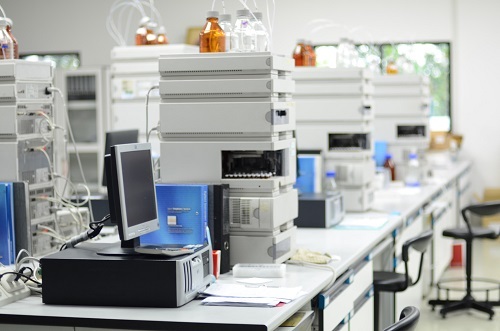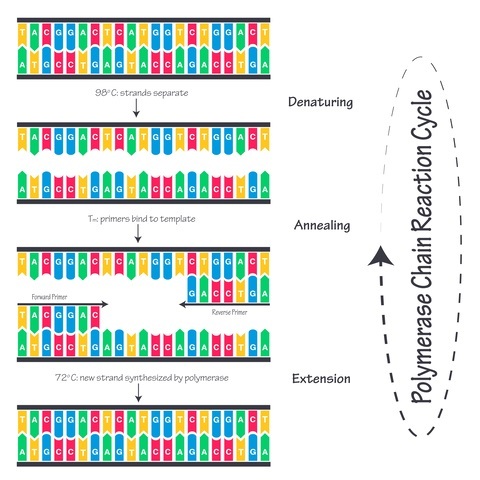
 Data Structure
Data Structure Networking
Networking RDBMS
RDBMS Operating System
Operating System Java
Java MS Excel
MS Excel iOS
iOS HTML
HTML CSS
CSS Android
Android Python
Python C Programming
C Programming C++
C++ C#
C# MongoDB
MongoDB MySQL
MySQL Javascript
Javascript PHP
PHP
- Selected Reading
- UPSC IAS Exams Notes
- Developer's Best Practices
- Questions and Answers
- Effective Resume Writing
- HR Interview Questions
- Computer Glossary
- Who is Who
Analytical Techniques in Biotechnology
Introduction
Biotechnology is a rapidly evolving field that has been revolutionized by the advancement of analytical techniques.
Analytical techniques are essential tools in biotechnology that are used to study the molecular structure, composition, and properties of biological samples. These techniques have been instrumental in the development of new drugs, the identification of disease biomarkers, and the discovery of new molecular targets for drug development.
The content below emphasizes different analytical techniques used in biotechnology, their advantages, and limitations.
Analytical Techniques in Biotechnology
Mass Spectrometry
Mass spectrometry is a powerful analytical technique that is used to determine the molecular weight and structure of biological molecules. This technique involves the ionization of a sample followed by the separation and detection of the resulting ions based on their mass-to-charge ratio. Mass spectrometry is used to analyse a variety of biological samples, including proteins, peptides, lipids, and metabolites.
One of the advantages of mass spectrometry is its high sensitivity and specificity. This technique can detect and identify molecules at very low concentrations, making it useful for the analysis of complex biological samples. Mass spectrometry is also highly versatile and can be used to analyse a wide range of molecular structures.
However, mass spectrometry also has some limitations. It requires highly specialized instrument and skilled personnel to operate. Additionally, sample preparation can be time-consuming and challenging, and the analysis of large molecules can be difficult due to their complexity.

High-Performance Liquid Chromatography (HPLC)
High-performance liquid chromatography (HPLC) is a separation technique that is used to separate and purify complex mixtures of biological molecules. This technique involves the use of a stationary phase, typically a solid material or a liquid coated onto a solid material, and a mobile phase, typically a liquid, to separate and purify the sample based on its physical and chemical properties.
One of the advantages of HPLC is its high resolution and selectivity. This technique can separate and purify complex mixtures of biological molecules with high precision and accuracy. HPLC is also highly versatile and can be used to analyse a wide range of molecular structures.
However, HPLC also has some limitations. It requires highly specialized instrument and skilled personnel to operate. Additionally, sample preparation can be time-consuming and challenging, and the analysis of large molecules can be difficult due to their complexity.

Capillary Electrophoresis (CE)
Capillary electrophoresis (CE) is a separation technique that is used to separate and analyse biological molecules based on their charge and size. This technique involves the use of an electric field to separate and detect the sample based on its electrostatic interactions with a charged surface.
One of the advantages of CE is its high resolution and sensitivity. This technique can separate and detect small differences in charge and size, making it useful for the analysis of complex biological samples. CE is also highly versatile and can be used to analyse a wide range of molecular structures.
However, CE also has some limitations. It requires highly specialized instrument and skilled personnel to operate. Additionally, sample preparation can be time-consuming and challenging, and the analysis of large molecules can be difficult due to their complexity.

Nucleic Acid Sequencing
Nucleic acid sequencing is a powerful analytical technique that is used to determine the sequence of nucleotides in a DNA or RNA molecule. This technique involves the use of a sequencing platform, typically based on the Sanger method or next-generation sequencing technology, to detect the sequence of nucleotides in the sample.
One of the advantages of nucleic acid sequencing is its high resolution and accuracy. This technique can detect and identify small differences in the sequence of nucleotides, making it useful for the analysis of genetic mutations, gene expression, and genetic diversity. Nucleic acid sequencing is also highly versatile and can be used to analyze a wide range of biological samples, including viruses, bacteria, and human tissues.
However, nucleic acid sequencing also has some limitations. It requires highly specialized instruments and skilled personnel to operate. Additionally, sample preparation can be time-consuming and challenging, and the analysis of large genomes can be expensive and time-consuming.
Polymerase Chain Reaction (PCR)
Polymerase chain reaction (PCR) is a technique used to amplify specific regions of DNA or RNA molecules. This technique involves the use of specific primers that bind to the target region of the molecule, followed by cycles of heating and cooling to denature and anneal the DNA strands and replicate the target region.
One of the advantages of PCR is its high specificity and sensitivity. This technique can amplify a small amount of DNA or RNA from a complex sample, making it useful for the detection and identification of genetic mutations, gene expression, and infectious agents. PCR is also highly versatile and can be used to analyze a wide range of biological samples, including blood, saliva, and tissues.
However, PCR also has some limitations. It requires highly specialized instruments and skilled personnel to operate. Additionally, the design of specific primers can be challenging, and the detection of non-specific amplification and contamination can be difficult.

Immunological Techniques
Immunological techniques are used to detect and quantify the presence of specific molecules, such as proteins or antibodies, in biological samples. These techniques involve the use of specific antibodies that bind to the target molecule, followed by detection using a variety of methods, including enzyme-linked immunosorbent assay (ELISA), western blotting, and flow cytometry.
One of the advantages of immunological techniques is their high specificity and sensitivity. These techniques can detect and quantify the presence of specific molecules at very low concentrations, making them useful for the diagnosis and monitoring of diseases and the detection of environmental toxins.
Immunological techniques are also highly versatile and can be used to analyze a wide range of biological samples, including blood, urine, and tissues.
However, immunological techniques also have some limitations. They require the production of specific antibodies, which can be time-consuming and expensive. Additionally, the detection of non-specific binding and interference from other molecules in the sample can be challenging.
Conclusion
Analytical techniques are essential tools in biotechnology that are used to study the molecular structure, composition, and properties of biological samples. Mass spectrometry, high-performance liquid chromatography, capillary electrophoresis, nucleic acid sequencing, polymerase chain reaction, and immunological techniques are all powerful tools that have revolutionized the field of biotechnology.
These techniques have been instrumental in the development of new drugs, the identification of disease biomarkers, and the discovery of new molecular targets for drug development. However, each technique has its advantages and limitations, and the selection of the appropriate technique depends on the specific research question and the nature of the biological sample.
With the continued advancement of analytical techniques, biotechnology will continue to push the boundaries of our understanding of the molecular mechanisms of life and lead to new treatments for human disease.

